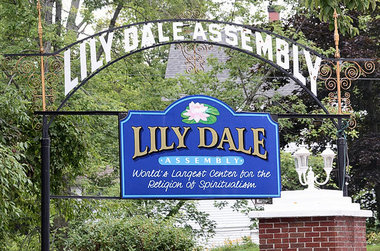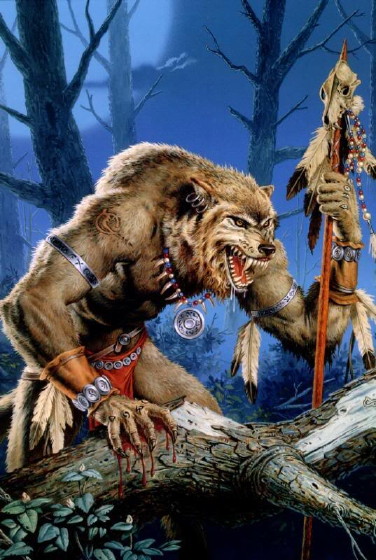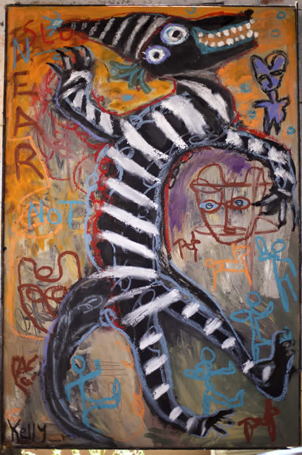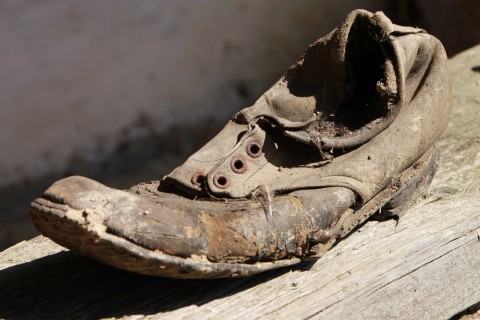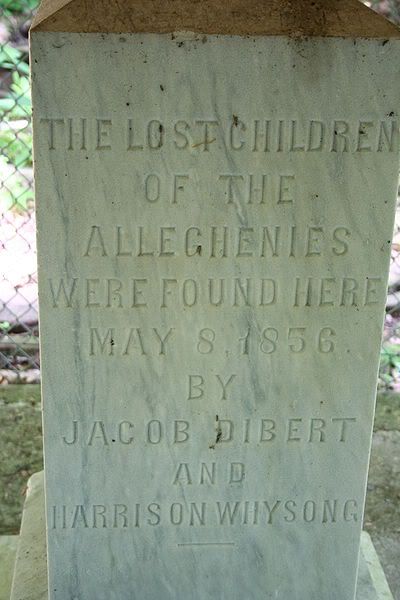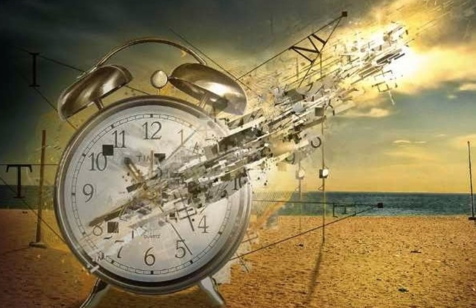
I was reading an article in the September 2018 issue of Fortean Times (FT370) called “Strange Stories from Southportâ€â€”a seaside town in Merseyside, roughly 20 miles north of Liverpool. Most of the stories in this article dealt with sightings of the Old Man of Halsall Moss—an old, possibly drunken, man in antique farmers clothes who is often seen staggering beside the road by passing motorists only to suddenly disappear.
Other people traveling the solitary places around Southport have had timeslips or momentarily driven through a changed landscape. One mother and son experienced a nighttime landscape beneath a crescent moon showering luminous arcs of light down upon the open fields. The streetlights on either side of the road echoed these luminous arcs, as did the headlights of the cars coming from the opposite direction. They passed a car with two ladies inside but when the mother looked in the rearview mirror, the car had completely disappeared, although there was no turn off anywhere nearby. When they returned home by this same road about three hours later, there were no arcs of light and, furthermore, they realized that the streetlights weren’t on either side of the road as they had originally perceived them, but went straight down the middle. They also realized that the crescent moon arcing light had been to the north of them instead of traveling its usual east to west.
Stories like this are a great comfort to me because I’ve had my own impossible sightings, when a mundane trip down a familiar road can turn suddenly…other. Even though I’m certain of what I saw and was fully awake in broad daylight, knowing that you have experienced something you just could not have experienced is deeply unsettling. You gnaw on it for the rest of your life, you return to it again and again, asking yourself how it could have been. And not infrequently, you (I) question your (my) sanity.
But when I read about other normal people seeing scrambled realities I can tell myself that sometimes weird stuff just happens.
Some time back my friends and I were having interesting discussions about timeslips and other warps in reality, sharing personal experiences of our own and of our friends. The next day I received the (then) latest Fortean Times (February 2017, FT 350) which had an article by Jenny Randles (“Timelessnessâ€) on “time travel, close encounters and other ripples in reality.†Being the good Jungian that I am, I recognized a synchronicity and started working on a post—which, alas, got buried by busyness in other areas.
My friend, L. (I have four friends with the first initial of L), told me of a strange encounter she and her then-boyfriend had when camping at a remote site in the Santa Rosa Mountains of California. As they drove along the lonely highway, they came up behind an old jalopy of a truck going slowly up the mountain. It was loaded with people riding in its bed and even though they spent considerable time behind the truck because the road was too narrow for safe passing, the only person in the vehicle who acknowledged their presence was an old guy who stared and laughed and grinned in a kooky kind of way that L. found quite unnerving.
The truck continued up the mountainside, but eventually L. and her boyfriend turned off at the campground. Their car was the only one in the small parking lot in the middle of nowhere. They unloaded their gear and hiked into the remote campsite. When they got there, two women sat on one of the campground picnic tables looking at a fire on a distant range. They didn’t seem unfriendly. They smiled and said something neither L. nor her boyfriend could understand and pointed to the smoke they were watching. Again, L. felt unnerved, but she put it down to having read too much Casteneda. She and her boyfriend hiked into the woods to set up camp but when they next looked at the picnic table, the women were gone. As the night progressed, a feeling of oppression overcame L., like something wanted them gone. She felt as if she was being closed in upon, watched. L. turned to her boyfriend and said, “I think we should leave. Now.†“I think you’re right,†he said. He’d been feeling the same thing. It was the middle of the night, but they packed up in a hurry and left.
Ms. Randles speaks of the “Oz factor†often preceding odd experiences, wherein, for example, a busy road or room suddenly becomes profoundly quiet as the state of consciousness of the percipient changes. Simon Young, writing in FT362 (January 2018—“Introducing the Fairy Census 2014-2017â€) says that there are a significant number of these experiences “while people are driving or travelling in a car†or stopped at lay-bys. He also speaks of a profound silence often accompanying this otherness.
In the case of a friend of a friend (another L.), when he was a teen, he was traveling down Roosevelt Boulevard in St. Petersburg, Florida in a car driven by his mother. The road was surrounded by fields and palm scrub, and as he gazed out the window, he was no longer in the car, which had completely disappeared. He was riding a horse and felt certain that he was an Indian. This went on for several minutes before he returned just as suddenly to the car.
Many years later, he decided to teach himself how to drive a stick shift so he borrowed his wife’s car and headed for this selfsame Roosevelt Boulevard because he knew he could drive to the end of it without getting in the way of too many other drivers. The boulevard dead-ended at some piney woods, so he headed in that direction. By the time he got there, it was dark and he came upon a stop sign that he didn’t remember ever seeing before. Not only that, instead of piney woods, the boulevard ended at a T-intersection. He also didn’t remember a road crossing there before, but as it was dark and he was uncertain where it led, he elected to turn around to go back the way he’d come rather than exploring the road. But he was curious, so he drove back the next day in the daylight. There was no stop sign and no road. He and his wife found an old map of the area and on that map, the road he had seen that night clearly appeared. They looked into it and discovered that the road had been created to service a housing development that had never come to pass because of environmental concerns. Even more curious, although the map had shown the road in anticipation of the housing development being built, the road had never actually been constructed. He’s very glad he decided not to drive down that road.
But it’s not just friends and friends of friends…
In December 1992, I gathered some of my loved ones together for our annual Christmas dinner. In the middle of the festivities when everyone was telling stories and laughing, my world came to a standstill. I’ve tried to describe this sensation before and that’s as close as I can come. I was sitting in that room, but outside of it, too. I saw everyone talking, but couldn’t hear them anymore. Inside of me everything had gone completely still, the kind of silence and stillness I’ve never felt before or since. I heard a voice. My impression is that it was deep, but I can’t be sure anymore and I can’t be certain whether it was male or female, but it was a voice of great conviction. It said, “This is the last Christmas you will all spend together like this.” With those words came the utter conviction that one of us would die before the next Christmas. I didn’t know who, but I suspected it was one of my parents. Then it was like the bubble burst and I was back in the room just as before, only trying hard to pretend nothing had happened, to deny what had happened. I told no one about this experience lest they think I was crazy. October rolled around and no one had died so I began to think it was ridiculous. So I finally told someone, my oldest friend, L., and we had a good laugh over my lunacy. Two days later, my father collapsed with an aortal aneurysm and passed away.
For oh so many reasons, my world was never the same after that. As Ms. Randles says, “we scramble to make sense of the scattered fragments of reality and reconstruct the world in a linear way.†It took some work to reconstruct things, but I never returned—didn’t want to return—to the same old linear narrative I’d been living. As Emily Dickinson once said, “Tell the truth, but tell it slant.†She was speaking of the artifice of art, but for me it means that the truth of reality is slant. Or as Simon Young says, “…an inconvenient fact slapping you hard in the face: reality is not as you thought.†Unless we live on the north or south poles, all of us are walking sideways on a globe, held there by gravity. But our brains can’t deal with this version of reality, so we create a level and flat plain, a straight-on world that doesn’t exist. I see the Other as something similar, something that exists alongside us, that we catch momentary glimpses of before our brains wrench us back into our more comfortable time and space.
I have also had my own “seeing things I couldn’t have seen while driving†experience. You can read about it here. (Note: I’ve just realized, looking back at that old post, that it happened the year my mother had her stroke and everything changed utterly for me. Not only that, I wrote the post no more than a week or two before my mother’s stroke.)
As Simon Young notes, “there have been several large-scale population-wide surveys of supernatural and psychic experiences over the past 120 years.†These have shown that as many as a quarter of the population have had these kinds of significant experiences, the kind that “the rest of the population would rather not think about.â€
As much as twenty-five percent of the population is an impressive number. Maybe, like me, they just read too many issues of Fortean Times or maybe, just maybe, there are layers and layers of otherness living just beneath the surface of ordinary life.


